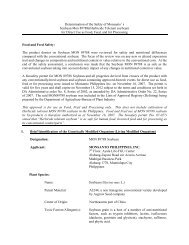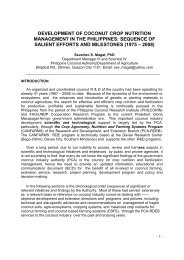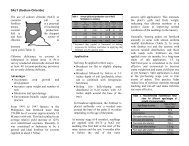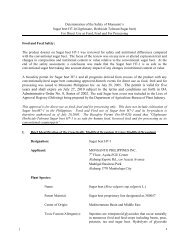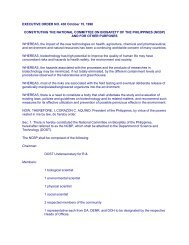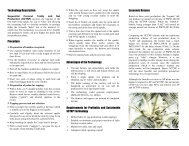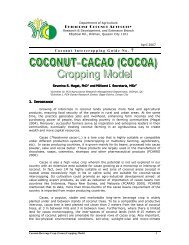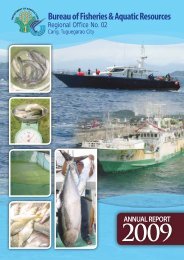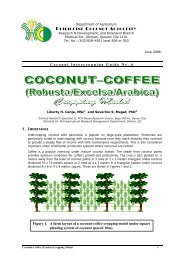Department of Agriculture - Philippine Coconut Authority ...
Department of Agriculture - Philippine Coconut Authority ...
Department of Agriculture - Philippine Coconut Authority ...
- No tags were found...
Create successful ePaper yourself
Turn your PDF publications into a flip-book with our unique Google optimized e-Paper software.
eported to be the best. Gabi is best adapted to a warm and moistenvironment, a daily average temperature <strong>of</strong> 27- 29 o C is ideal for gabi.Below 27 o C, yield is reduced. Likewise, above 29 o C, the plants are stuntedand yield is greatly depressed. For best yield, an annual rainfall <strong>of</strong> 2000 mmis required throughout the growing period. It grows best at 1,800 metersabove sea level (http://www.da.gov.ph/farming tips).B.4 Ubi and Yam – are upland crops and they should be planted in well-drainedfield. Yam requires temperature ranging from 25-30 o C,sandy loam to siltloam soil with high organic matter, ample moisture throughout their growingperiod, particularly from 14-20 weeks after planting when tuber bulking(filling-up) occurs rapidly (http://vicarp.lsu-visca.edu.ph.ph/technologies.htm). Yams respond to length <strong>of</strong> daylight periods. Shortdaylights tend to favor tuber formation while long daylights favor vinegrowth.B.5 Ginger – grows best in sandy loam, clay loam and lateritic (reddish highlyweathered) deep soils <strong>of</strong> not less than 30 cm (PCA Intercropping Guide,undated).4.2 TechnologyIt is very important to apply the best package <strong>of</strong> technologies (POT) orbetter still, the site-specific technologies to achieve the maximum economic yield(MEY), highly desirable to obtain the least production cost per unit product or perha, and the maximum returns to investment under the coconut-root cropsproduction systems.4.2.1 Root crops4.2.1.1 Cassava1) Land preparation – prepare field by plowing 2-3 times, depending on thedegree <strong>of</strong> soil compactness and porosity, followed by harrowing when there isenough moisture. Make ridges with 15-20 cm high and 75-100 cm distancebetween furrows (Phil. Root Crops Information Service, VISCA, Leyte).2) Preparation <strong>of</strong> planting materials – select only fresh, mature or healthy stems- fresh if the latex or sap comes out within six (6) seconds after cutting,mature if the diameter <strong>of</strong> the pith or cork is not more than half the diameter<strong>of</strong> the cortex, healthy if it is pest-free and diameter <strong>of</strong> the stem is not lessthan 1.5 cm. Obtain stalks from a healthy stand which is at least 8 mos. old.Use a saw or bolo to separate cuttings 20-30 cm long. Keep the stalks for notmore than five days, undershade in upright position.3) Planting – plant cuttings in furrows one meter apart, each cutting set at 0.75to 1 m apart between ridges and 0.50 – 0.70 m between hills. Replant missinghills 2 weeks after planting. Weed the cassava plant within 2 months afterplanting. Plant in slanting position at angle <strong>of</strong> 45 o when the soil is fairly dryand in vertical position when planting is done during the wet season. At least15 cm <strong>of</strong> the cutting should be buried or covered with soil.4) Varieties – plant only high yielding varieties and according to needs. Forstarch, varieties VC-1, VC-2, VC-3, Datu. For food or feed purposes, it isstrongly recommended to use only Lakan or Golden Yellow varieties.<strong>Coconut</strong>-Root Crops Cropping Model 8



